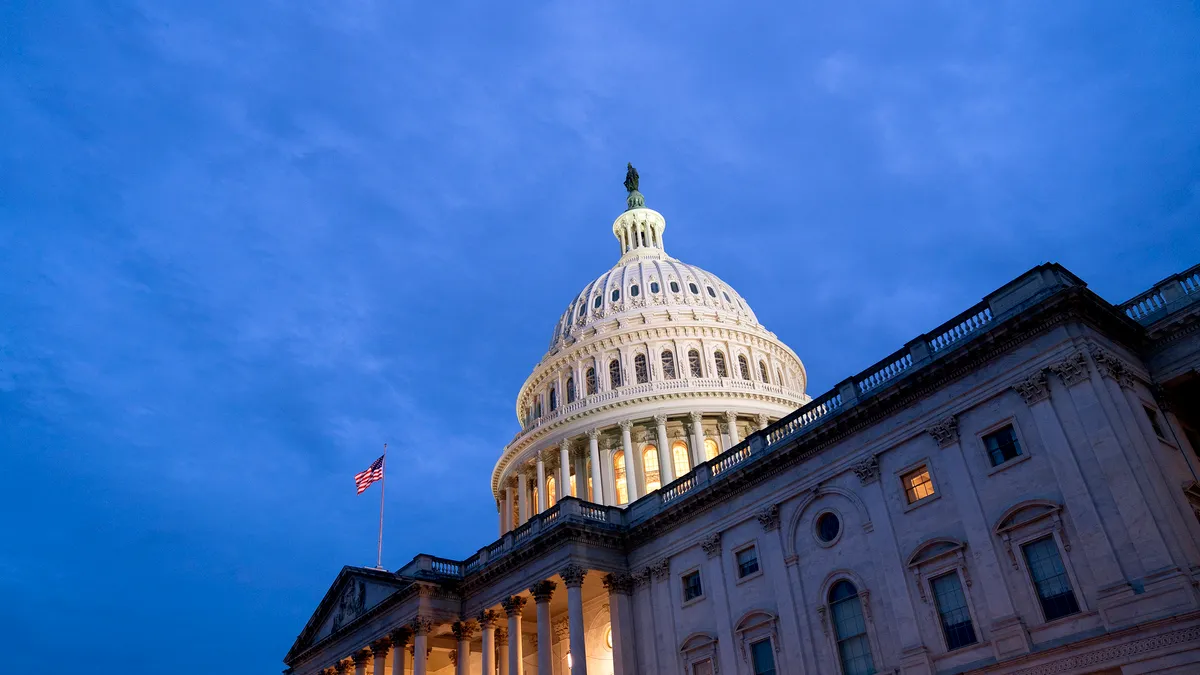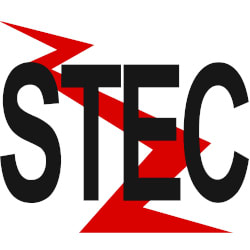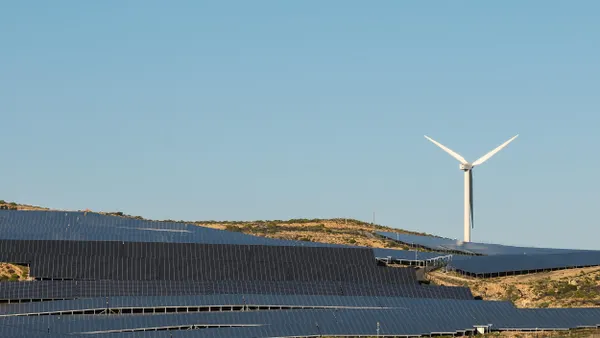UPDATE: Nov. 16, 2021: President Joe Biden signed on Monday the $1.2 trillion infrastructure bill, which includes funding for grid projects and climate resilience. Biden also issued an executive order outlining the administration’s priorities for implementing the law and setting up a task force to oversee the process.
Biden said the law is “going to make it possible for Americans to get off the sidelines and into the game of manufacturing solar panels, wind turbines, batteries to store energy and power for electric vehicles, including electric school buses, which will mean millions of children will no longer inhale the dangerous diesel fumes that come out of the buses.”
Dive Brief:
-
The House on Friday approved a $1.2 trillion bipartisan infrastructure bill that includes about $65 billion for grid infrastructure and $50 billion for cyber and climate resilience over five years. Approved by the Senate in August, the bill now heads to President Joe Biden.
-
Utility and renewable energy trade groups heralded the bill's passage on Friday, saying it would help spur the shift towards emissions-free electricity through increased funding for transmission, hydrogen and electric vehicles (EVs).
-
Next week, Democrats in the House of Representatives plan to take up the $1.75 trillion budget reconciliation bill, which includes about $550 billion over 10 years for clean energy and climate programs.
Dive Insight:
House Democratic leaders on Friday wanted to pass both the infrastructure bill and the budget reconciliation bill, called the Build Back Better Act. But moderate Democrats asked for more financial information about the Build Back Better bill, so a vote on that legislation was delayed.
However, in a key procedural step, the House approved a "rule for consideration" for the reconciliation bill, setting the stage for the House to vote on the legislation next week, according to House Leader Steny Hoyer, D-Md.
Also, the House passed the infrastructure bill with the support of 13 Republicans.
The Edison Electric Institute, a trade group for investor-owned utilities, praised the bill's passage, saying it will make "significant investments in the critical energy infrastructure and new carbon-free technologies our industry needs to deliver a 100-percent clean energy future."
The bill's spending on the electric system will help renewable energy facilities connect to the grid, Heather Zichal, American Clean Power Association CEO, said.
The legislation establishes a $2.5 billion revolving loan fund to establish DOE as an anchor tenant for new or upgraded transmission lines, according to a 129-page summary of the bill. It allows DOE to commit to up to half the capacity of the power lines and then sell the capacity to others.
It also sets up a $6 billion cost-share program to support grid reliability research and development, and demonstration projects as well as a $5 billion grant program for utilities, state and tribes to bolster the grid in the face of extreme weather, wildfire, and natural disaster.
On the regulatory front, the bill gives the Federal Energy Regulatory Commission the authority to approve transmission projects in national interest transmission corridors that are blocked by state inaction or rejection.
However, FERC Commissioner Richard Glick doubts the backstop siting authority will have much practical effect. "I think it's going to be somewhat limited in terms of its deployment," Glick said Oct. 27 during a webinar hosted by the Niskanen Center and the Clean Air Task Force.
The legislation provides $7.5 billion to help set up a national EV charging system and $5 billion for electric school buses. It also contains $6 billion for battery material processing grants and battery manufacturing and recycling grants.
Other provisions in the bill include:
- $8 billion to set up at least four "clean" hydrogen hubs;
- $6 billion in subsidies for uneconomic nuclear power plants;
- $3.5 billion to establish four hubs for removing carbon dioxide from the air; and,
- $2.1 billion for a loan program for carbon dioxide transportation.














